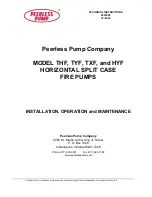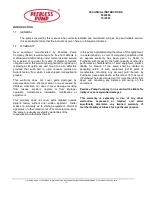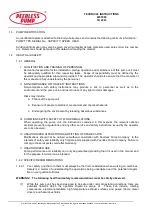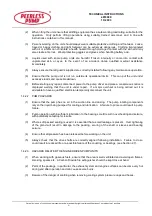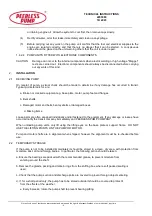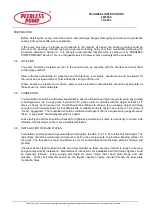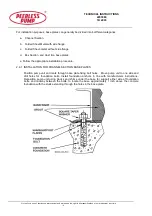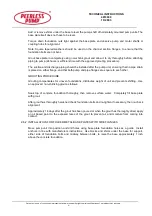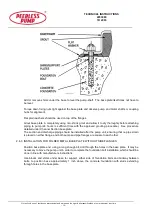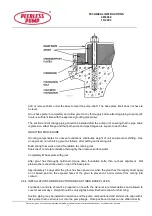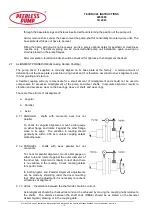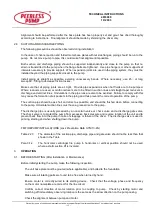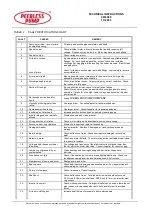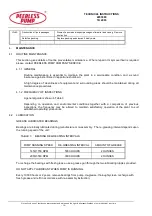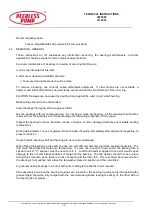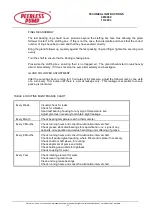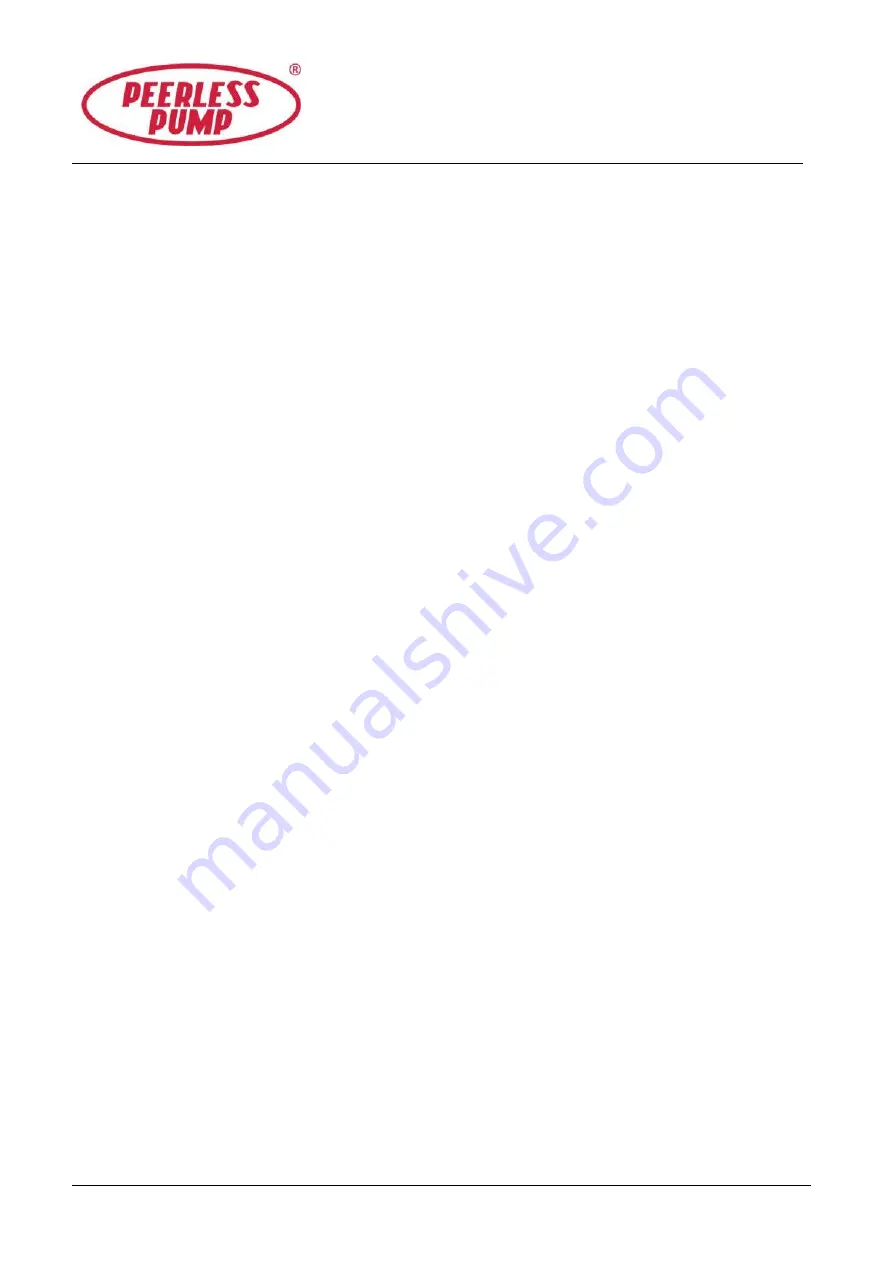
TECHNICAL INSTRUCTIONS
4853989
10/ 2003
Our policy is one of continuous improvement and we reserve the right to alter specifications of our products at any time.
- 7 -
PREPARATION
Before installing the pump, clean the suction and discharge flanges thoroughly and remove the protective
coating from pump shafts, where applicable.
If the pump has been in storage and prepared in the manner as above, the bearing grease should be
removed, the bearings cleaned (using an approved cleaning fluid) and then re-lubricated following the
procedure detailed in Section 4. It is strongly recommended that this work is carried out by PEERLESS
PUMP COMPANY Service. This is a chargeable service; however pump warranty will be protected.
2.4
LOCATION
The pump should be installed as near to the liquid source as possible, with the shortest and most direct
suction pipe practical.
Allow sufficient accessibility for inspection and maintenance, and ample headroom should be allowed for
the use of an overhead crane or hoist sufficiently strong to lift the unit.
Where pumps are electric motor driven, power source electrical characteristics should be appropriate for
those shown on motor data plate.
2.5
FOUNDATION
The foundation should be sufficiently substantial to absorb vibrations and rigid enough to avoid any twisting
or misalignment. As a rough guide it should be 12 inches wider on all sides with the weight at least 1-1.5
times as heavy as the pump unit. Depth should be sufficient to achieve the necessary weight and deep
enough to accommodate holes for foundation bolts. A suitable concrete mixture by volume is 1:2:3 (Cement
: Sand : Aggregate). The foundation should be reinforced with layers of 6 inch square No.8 gauge steel wire
fabric, or equivalent, horizontally placed 6 inch apart.
Loose bolt type anchors should be checked for tightness periodically, as there is a tendency to loosen with
vibration. Chemical type anchors are a suitable alternative.
2.6
INSTALLATION OF BASE PLATES
Foundation concrete should be poured without interruption to within .5 to 1.5 inch of the finished height. The
top surface should be well scored and grooved, before the concrete sets, to provide a bonding surface for
the grout. The foundation should be allowed to cure for several days before the base plate is shimmed and
grouted.
Chemical Anchor type foundation bolts are recommended as these are less inclined to loosen in service,
and generally simplify installation. Manufacturer's instructions for installation and final torque figures should
be rigorously followed.
Allow enough bolt length for grout, shims, lower base plate flange, nuts and
washers.
Anchor bolt diameter should be the largest capable of being inserted through the base plate
foundation holes.
Summary of Contents for HYF
Page 2: ......

